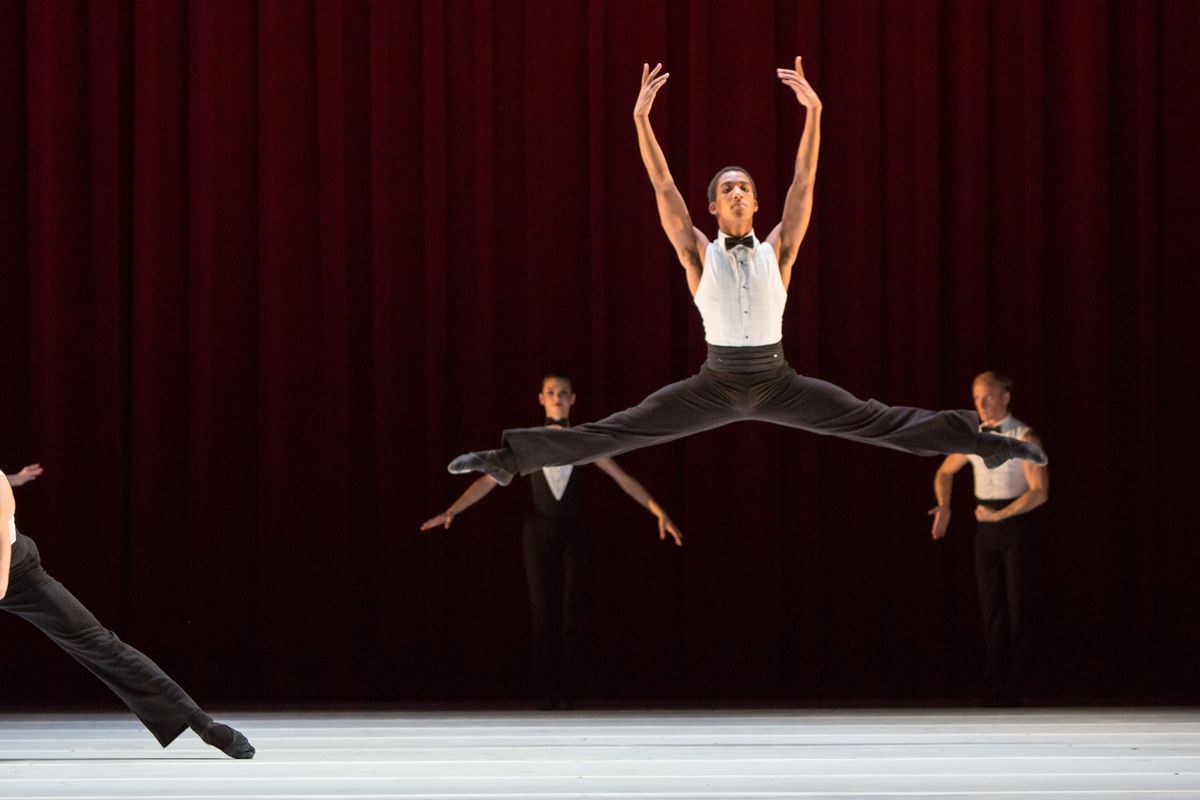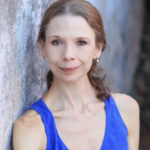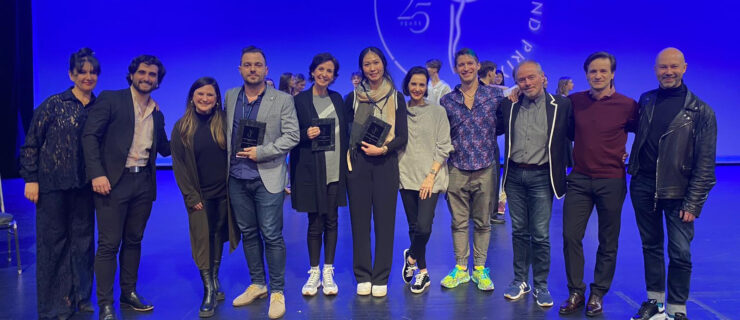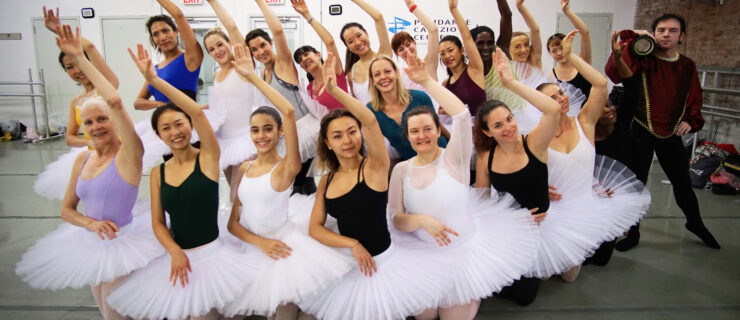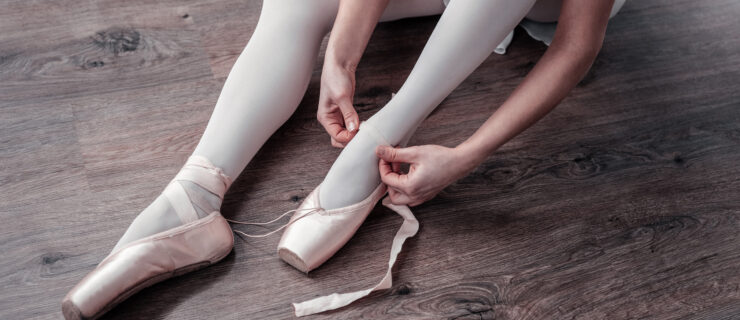The Choice That Changed Everything: 4 Pros Share the Best Training Decision They Made
This story originally appeared in the April/May 2016 issue of
Pointe.
Deciding to pursue a career in dance is huge. But even with your eyes firmly on your goal, figuring out the best track to get you there can be confusing and stressful. What school to go to, which teacher to follow, and when or whether to leave home are questions all ambitious dancers face, and there’s no right answer for everyone. Behind every successful dancer lies a path riddled with difficult decisions and moments of doubt. Often, coming to a fork in the road means making a realistic assessment of what your needs truly are. These three dancers faced tough choices at crucial moments in their training years, but pushed outside their comfort zones and took risks that ultimately paid off.
Sara Mearns, Principal, New York City Ballet

Mearns in Balanchine’s Walpurgisnacht Ballet. Photo by Paul Kolnik, Courtesy NYCB.
When I was 12, Ann Brodie, my ballet teacher in Columbia, South Carolina, passed away. I’d studied with her since I was 3, so that was really rough. I was left with nothing. But before she passed, Miss Brodie had told my mom, “Sara has to go to New York. She has to go to the School of American Ballet.”
My mom was always trying to find the best school for me, the right teacher. After Miss Brodie’s studio closed, she drove me one and a half hours to Charlotte, North Carolina, every day to study under Patricia McBride. At the time, I didn’t know who she was, but my mom did. I didn’t realize how important that training was, but now I see it was essential to my understanding of Balanchine technique. It was exactly the preparation I needed to go to SAB and then join New York City Ballet.
We had to stop going to Charlotte after about eight months, and again I had nowhere to go. So I gave myself class every day in our basement, just trying to stay strong. I was 13 and had no idea what I was doing. Then I spent a year at the Governor’s School for the Arts, which was a great transition, although it wasn’t Balanchine technique.
I think it’s really important for a student’s training to be a family effort—parents have to do their research. My mom was sort of the puppet master behind everything. She knew that I needed to be at SAB full-time, so I’d been going to their summer courses. But they hadn’t yet asked me to stay year-round.
After my fourth summer at SAB, I put myself on the line—I asked them if I could stay. It was the pivotal moment of my whole life, because if they hadn’t said yes, I would have stopped dancing. There was nowhere I could further my pre-professional training at home.
Even though I really didn’t have the “perfect” story, there’s nothing I would have done differently. There were definitely some rough moments, but you have to go through tough times. It’s never going to be easy.
Harper Watters, Corps de Ballet, Houston Ballet

A summer program helped Watters shift his focus from modern to ballet. Photo by Jordan Matter, Courtesy Houston Ballet.
Growing up at a local competition studio in New Hampshire, I didn’t have a ballet focus. But when I saw YouTube videos of Carlos Acosta and Angel Corella I thought, “I want to do that!” and enrolled at the nearby Walnut Hill School for the Arts. There I was placed in the lowest ballet level, but the highest in modern. It was a rude awakening, and I took that as a sign to shift my goal to being a modern dancer.
But my teacher wanted me to focus on classical, too, and sent me to The Washington Ballet and Houston Ballet summer programs. It was a turning point. I’ve never shied away from being inspired by other people instead of intimidated by them—doing so helps me improve myself. I’ll never forget the first day at HB’s intensive: I was at barre with two Houston Ballet II dancers, and their technique was incredible! It really opened my eyes to how much catching up I still had to do—it was a new starting point. But I pushed myself and saw my footwork and lines improve, and I realized that if I put my mind to it, a career in classical ballet was possible.
At the end of the summer, I was offered a contract with HBII. It was a difficult moment for my family, because it meant not returning home to Walnut Hill for my senior year of high school. My mom is a college professor and I’d been planning college visits already. But you have to go where you feel supported and spoken to. It was high-risk, but the most important decision of my career. When I competed at the Prix de Lausanne two years later, I saw that Houston had given me the foundation I needed to succeed. I just needed to trust my technique, my teachers’ coaching, and conquer any sense of doubt.
Sarah Tyron, Corps de Ballet, Colorado Ballet

Tryon, here in La Sylphide, traded a big school for a smaller program. Photo by David Andrews, Courtesy Colorado Ballet.
I started training at Canada’s National Ballet School when I was 12. But I also wanted to see everything in the ballet world and then make a calculated decision when I was looking for a job. NBS has summer exchange programs with schools around the world, so I went to Ecole Supérieure de Danse de Cannes Rosella Hightower in France, and then to Pacific Northwest Ballet School to learn Balanchine technique (NBS is more Vaganova and Cecchetti). I also went to Zurich’s Tanz Akademie to improve my contemporary and improvisation skills because I wanted to be more well-rounded.
But after graduating from NBS, I felt like I still needed to gain strength and get a sense for how to be a professional dancer. I’d been in big ballet schools up until then and wanted private training, so I auditioned for the Ellison Ballet Professional Training Program. It was completely eye-opening: Mr. Ellison focuses in on how to approach every single step in ballet, which was exactly what I needed. I wanted to know everything I was doing wrong, because I knew once I got into a company I wouldn’t get as many personal corrections. There were only seven girls in the advanced class, and we had three-hour technique classes every day, plus pointe, pas de deux and rehearsals. After his program, I got a corps contract with Sarasota Ballet.
Mr. Ellison was the teacher I’d always wanted but could never find. It was absolutely a turning point for me.
Amy Watson, Principal, Royal Danish Ballet

Watson in La Sylphide. Photo by Costin Radu, Courtesy Royal Danish Ballet.
Amy Watson’s training was literally all over the map. From RAD to Cecchetti to Balanchine, her path eventually led to the Royal Danish Ballet, where she’s now a principal. An “unusual” journey, she says, but one that ultimately defined her as a dancer.
As a child, Watson spent two years at the Royal Academy of Dance in England. When her family relocated to Virginia, pure chance led her to Lisa Avery, a Cecchetti teacher who became her mentor from the age of 11. Together they mapped out a practical plan to reach her dreams. “I told Lisa I wanted to be in New York City Ballet,” says Watson. “She explained about Balanchine style and physique, the competition I’d face. She was a realist.”
Watson faced reality head-on when an acceptance to the School of American Ballet’s summer program led to an invitation to stay year-round. “It was a harsh awakening. Deep down, I realized I wasn’t necessarily born to do Balanchine, but I wanted it so badly that I just focused on it 100 percent. I don’t have a naturally gifted Balanchine body, so I thought if I did make it into the company, I’d be a wild card.”
With this in mind, Watson soaked up all she could from Russian and Cuban guest teachers at SAB. But when she was introduced to Bournonville technique, something clicked. “RDB’s director, Nikolaj Hübbe, staged a piece for SAB’s Workshop, and I could feel it was more natural and agreeable to my physicality than Balanchine.” She shifted focus, and when the company held its first-ever U.S. auditions that year, Watson landed a corps contract.
Staying open-minded instead of locking into one style proved key to Watson’s success. “For me, it wasn’t about one school or another. It was about taking from every instructor the best they had to offer and not shutting myself off from anything. I definitely wouldn’t be as versatile or healthy in my technique without knowledge from all those different teachers.”
